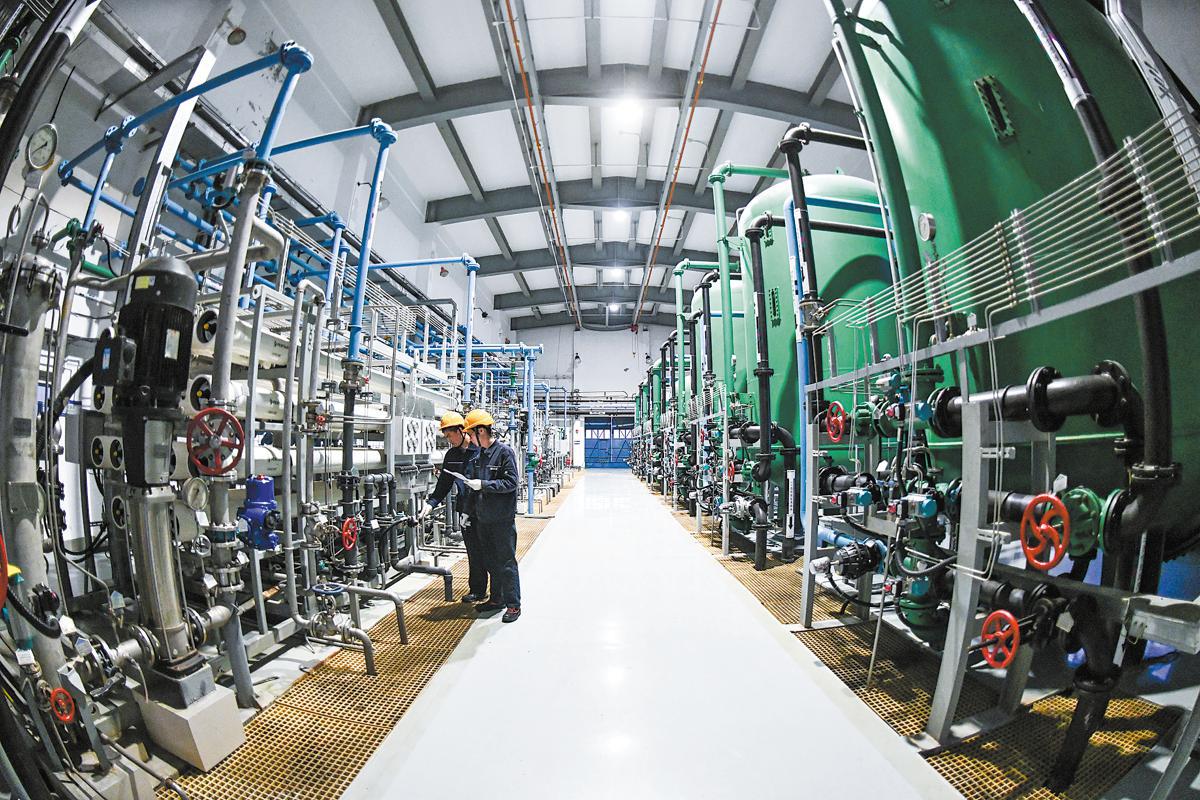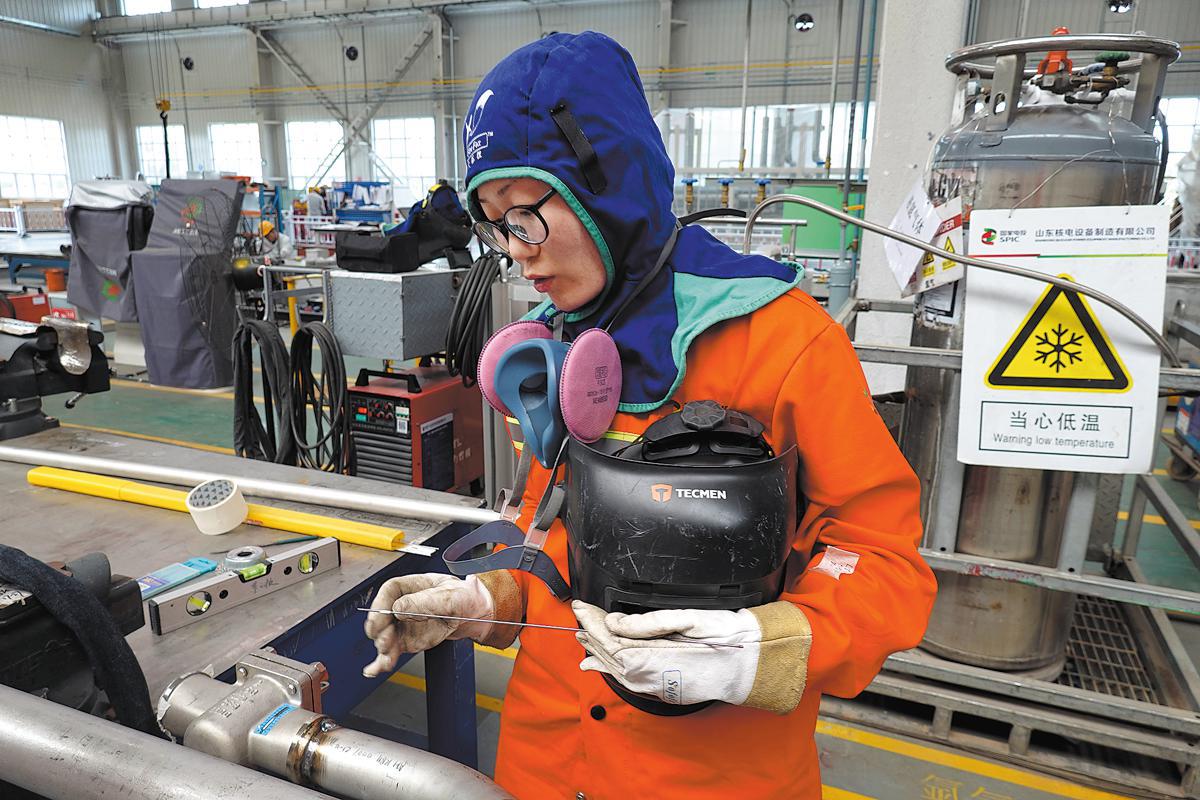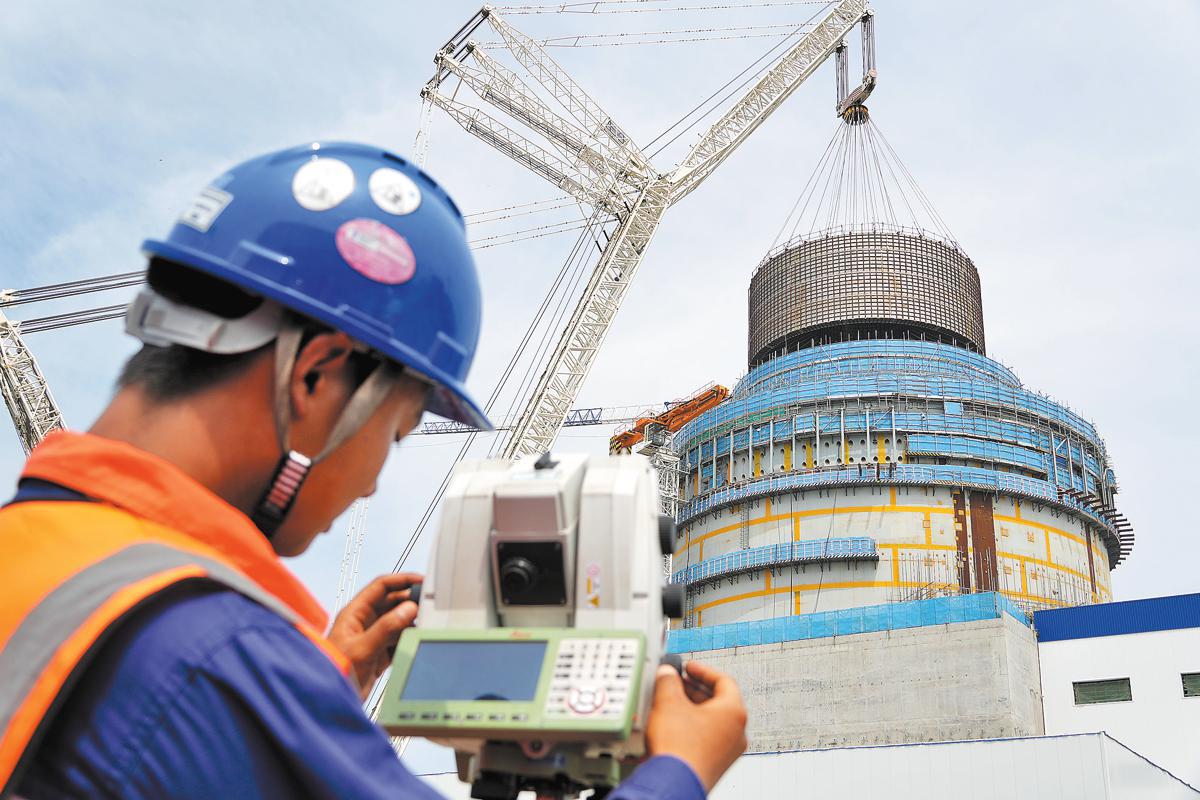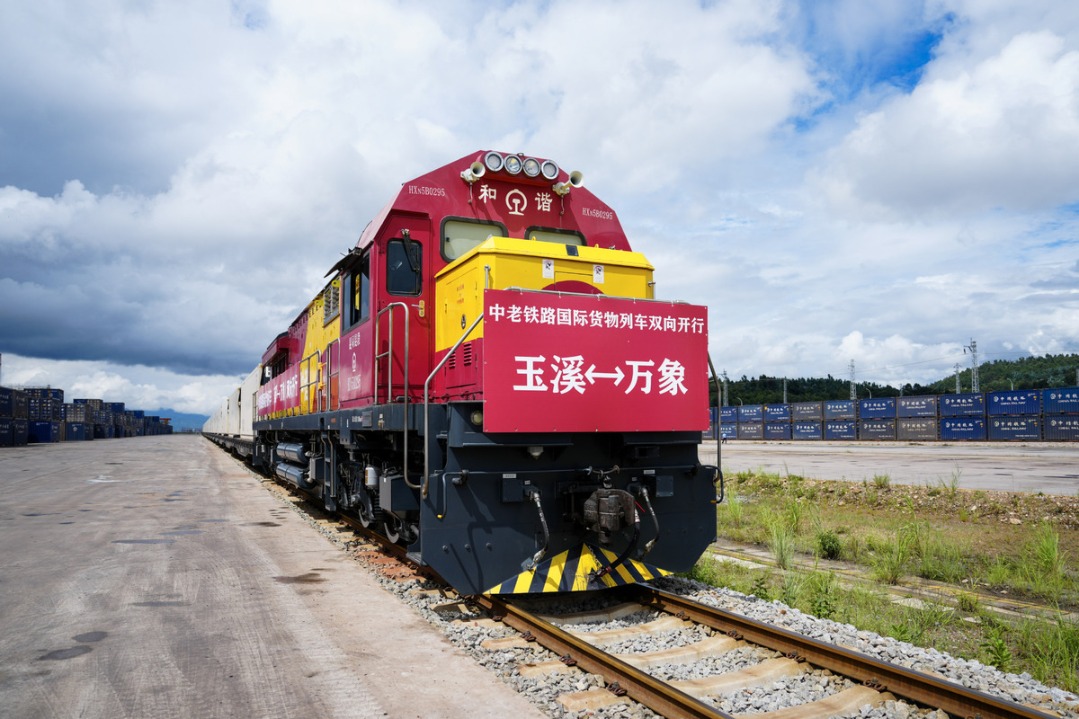Safety at nuclear site paramount
Workers on Shandong reactor project placed under strict supervision to ensure well-being

Editor's note: China Daily is publishing a series illustrating the efforts being made to achieve the country's carbon peak and carbon neutrality goals.

Safety for the over 9,000 workers on the construction site of the third and fourth reactors at the Haiyang Nuclear Power Plant in Shandong province is of critical importance.
Each welder is required to wear a recording device upon entering the construction site. Before they start welding, they must position the camera at a suitable distance to ensure that every action can be captured.
At the end of their shift, they upload all data to an intelligent supervision system for review. At the same time, their activities are closely monitored by an artificial intelligence surveillance system and by safety officers around the clock.
The construction site of Phase II of the Haiyang Nuclear Power Plant serves as a prime example of how China has prioritized safety and quality in the construction of nuclear power generation facilities.
Run by Shandong Nuclear Power Co, a subsidiary of the State Power Investment Corporation, the Haiyang plant has two reactors in operation. Construction began on two new reactors in July 2022 that are expected to come online in 2027.
Welding operations across different sections of nuclear power facilities necessitate distinct welding certifications, according to Zhang Zhongwei, deputy head of Shandong Nuclear Power Co's engineering department.

"Record-keeping serves to deter unqualified personnel from engaging in unauthorized welding operations, and it also offers welders a means of self-verification to address quality concerns," he said.
At the click of a mouse, the location and movement of each of the 9,164 workers working on site appear, he added.
There are 981 cameras positioned across the site to monitor different facets of construction, he said, highlighting the role of the intelligent system in preventing the collision of tower cranes.
During the peak period in the initial stages of construction, 12 tower cranes operated simultaneously on the site, which is the size of four soccer fields, he said. The system is capable of alerting crane operators when their jibs are within 20 meters of each other, and automatic brakes are activated once the distance between them narrows to 15 meters.

Zhang revealed that all safety supervision monitoring data within the system is retained for three months, while data related to quality oversight is stored for six to nine months, based on the requirements of relevant departments.
The AI cameras can identify any improper behaviors from the workers, he said, such as whether they are wearing a seat belt or not.
A group of five safety officers from different subcontracting companies involved in the construction review real-time footage from the site to detect any instances of improper practices, he said. Their collective effort is dedicated to pinpointing potential risks outside their respective company's operation areas.
"Prompt instructions will be given to address major hazards once they are found. Additionally, a daily safety meeting is conducted to reflect on lessons learned and prevent the recurrence of such incidents," said Zhang.
houliqiang@chinadaily.com.cn
























